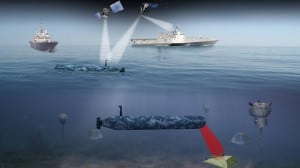
The U.S. Navy plans to conduct an industry competition for the Extra Large Unmanned Underwater Vehicle (XLUUV) in the current fiscal year, according to a service official.In September, the Navy issued a request for information (RFI) on capabilities that could help it achieve the extended-range vehicle. The service is now reviewing the responses, said Nidak Sumrean, executive director of the program executive office for Littoral Combat Ships (LCS), which includes the Unmanned Maritime Systems Program Office.The Navy plans to build…

 By
By 











